Despite all of the Covid-19 worries and restrictions, as well as a late seeding, we had a successful hemp crop. To learn about why we’re growing hemp, check out this post.
We couldn’t make up our minds about whether or not a second hemp crop would be profitable, so when we finally decided to pull the trigger, I was surprised and a little stressed. My father-in-law, Mike, ordered the seeds, some trays, and vermiculite. He also procured a giant bag of soil from a new and knowledgeable source, Voodoo Hydro Supply.
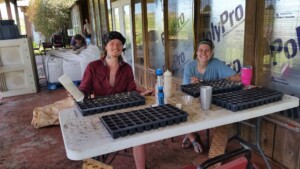
Starting the Seeds
We put the first round of seeds in their flats in the first week of June and they were off to a great start. Last year we used the hoophouse we built as a germination station. It had several problems involving ants, mice, rabbits, heat, humidity, head bumping, and slugs.
This year, we utilized the dry facility – a building we rented to cure and dry last year’s crop. Inside this facility, Aaron and friends hung grow lights and set up an efficient little germination room; air-conditioned, humidity-monitored, and rodent free…almost. I learned a lot about the importance of air-flow, regular waterings, the light system on a timer, and how to spot potential problems in the plants. This part of the plants’ lives is probably the most vulnerable – the tiny babies are more susceptible to stress from under or overwatering, and can be obliterated if too many grasshoppers get in. (We had to keep the doors open on either end of the room for efficient air flow, and the fans would blow any sort of screening attempt). The babies received 2 doses of soil-building and super plant health power, mycorrhizal fungi during this stage as well.
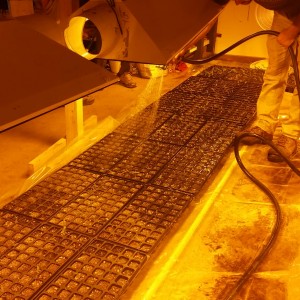
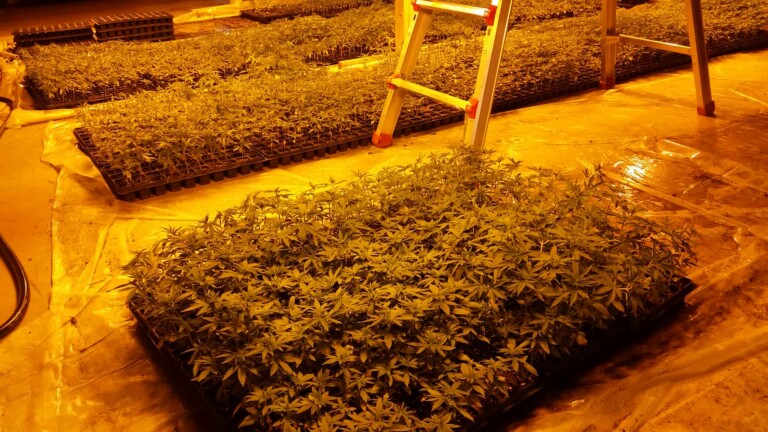
The 5 Varieties we Planted This Year
Cherrywine (Just a test crop, purported to be an excellent variety for Oklahoma, given to us by a friend.)
White CBG Near zero THC
Sour Space Candy Loud and intoxicating terpene profile
Suver Haze 1st place 2020 cultivation classic, highest CBD content available from seed distributor (~25%)
Lifter Vigorous growth, high yields
Special Sauce High CBD content (~ 20%), excellent for full spectrum oil extraction
One day, after seeing many seeds pop up with those first little cotyledons, I noticed that an entire tray was not sprouting. After closer inspection, I saw a line of red ants heading out the back door. And one of them was carrying a seed, about 2 times the size of its abdomen. The ants dug the seeds out and left like thieves in the night. A few sprays of essential oils and alcohol around the trays prevented any further theft.
Hardening Off
When the babies got big and sturdy enough, I moved all 100 flats outside to harden off. It was a pleasant early evening in July and there was not a cloud in sight. Later, perhaps right after supper, I heard a huge thunder crack. I checked the weather, and a humongous storm front was headed our way. We hadn’t yet built our mini-hoophouse so the plants were totally vulnerable and unprotected. I began carrying them in, 2 by two, but the storm got there so fast, I didn’t even have time to find my rainboots, just a hoodie and a ball cap. It was a downpour, one of those Oklahoma deluges that usually happens in April. I ran back and forth a million times, carrying the soaked and thrashed flats of plants. When I got them all back in, my hoodie was a soaked sponge. Despite my worry, only 2 flats had about 2 rows of plants that had been under a porch edge and were completely blasted out of their cups. I managed to save 95% of the crop. That storm kept on through the night, so I’m glad I didn’t decide to wait it out.
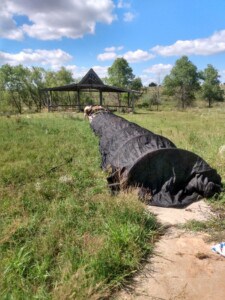
Later that week I erected the mini hoophouse using some metal stakes and 1 inch conduit pipe. Then we were able to cover the plants with shade cloth during the hottest part of the day. They only need this pampering while hardening off, just before transplanting into the ground. Meanwhile, my husband, son, and a friend laid the irrigation lines and the row covers in the field. We have a nifty machine that scoops the dirt into rows, while covering the irrigation line with the specified mound size while simultaneously fitting the row cover nice and neat.
Transplanting into the Ground
When the field was ready, we hired a couple of hands to help plant the babies into the ground. Another machine, called a watermelon planter works really well for this. It has a wheel that punches a hole in the row cover and fills it with fishy smelling fertilizer and water. This machine also has seats for 2 people very low to the ground and shelves to hold the trays.
The process went this way: 2 people rode on the seats and inserted plants into holes. 3 to 4 people walked along behind and moved the dirt up around the plants to fill the holes and insure the plants were upright. Aaron devised a leapfrog pattern so the person last in line would jump up to the plant just behind the tractor. This way no one was left behind and no plants were skipped. This year it took all of two and a half nights (one simply does not transplant during daylight hours.) The following photo is actually from last year’s crop. This year, we somehow didn’t get pictures.
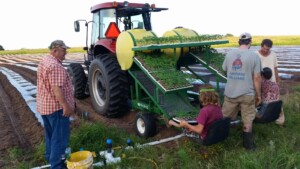
A big difference in our first year and 2020 was the spacing. Last year, many plants were crowded and the rows were far too tight, creating a jungle you had to wade through with arms held up like shields so you didn’t get slapped in the face by a hemp lady. This year we did 4 feet in between each plant and 10 feet in the rows. This allowed the use of a 4 wheeler and riding lawn mower in each row. Because the rows are up on shelves, we had to mow with a string mower on the edges, and a riding lawn mower down the middle.
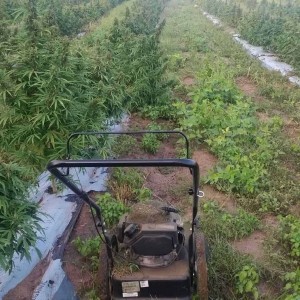
Growth and Field Management
The plants did well right from the get-go. Their maximum height was much smaller than last year, due to the shorter growing window. But most were healthy and produced decent yields.
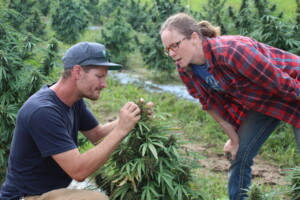
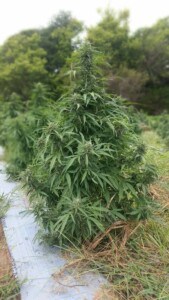
Most of August and September the plants didn’t require much; mowing between the rows, application of fertilizer through the irrigation, and application of Bt. Bt is an organic insecticide to keep the caterpillars from causing too much damage. We did have to pull the occasional male plant from last year’s volunteers.
Several of the Cherrywine plants turned male as well. The plants were growing fabulously with very little input or management. Just sandy loam, Oklahoma sunshine, organic fertilizers, and a bit of irrigation. Because growing hemp can be a soil regenerative process, the soil quality will increase over time. We leave the roots intact in the soil, add mycorrhizal fungi and microscopic beneficial bacteria, and only minimal tilling in the spring.
Harvest Time
Then came harvest. We hired the crew, averaging 10 people a day, for 12 hours a day, 8am to 8pm. With Aaron busy at his full-time day job, I had to manage the crew. Not my strong suit (withdrawn enneagram 4) but I did well I think. Our oldest son was in public school during the days so he couldn’t babysit. That left me to keep the 3 and 6 year old occupied while teaching the crew members how to cut the larger colas and leave the larfy ones behind. (Larf is a slang term in the cannabis industry meaning light, fluffy or airy buds). After some days, one employee became my managing buddy and together, we “smashed that field,” with our minimally tired crew keeping up the whole time.
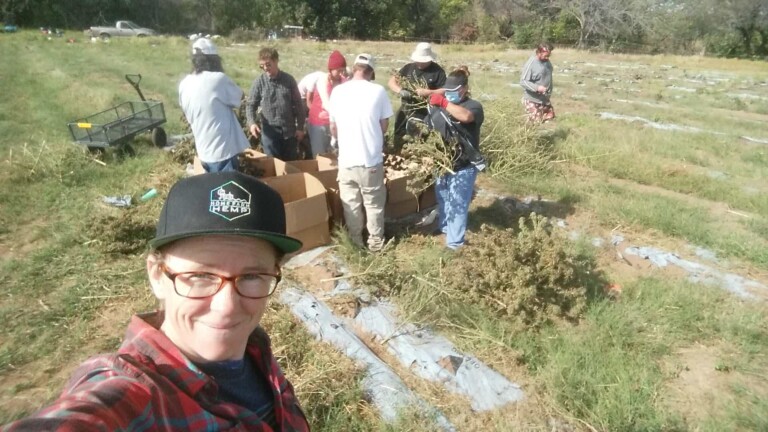
The field crew was a lot of fun most days. Picking hemp, sharing stories, laughing with the kids when they played near us. It takes a lot of energy (for me anyway) to keep people motivated and working fast and efficiently. Some days seemed to drag ass, like the day that someone said, “This is the longest hour I’ve ever dealt with.” Enter words of encouragement. Some days, my back was aching from repetitive bending or toting around boxes. On those nights, I found much relief taking our very own CBD gummies. Other days flew by with lots of laughter and productivity together. “Wow, we’re already done with that row? Great work, team!”
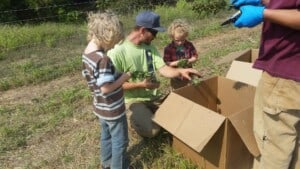
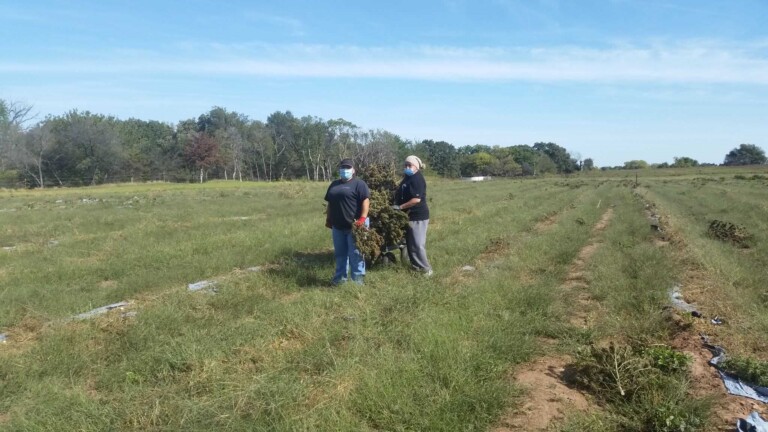
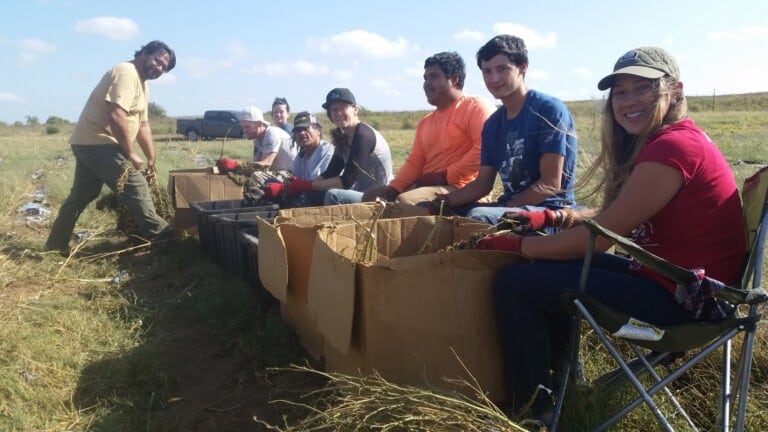
For hand-harvesting, all you need are some gloves, decent shears or trimmers, a few limb loppers, and some boxes. Oh and a good bluetooth speaker to blast tunes like Legalize It, and I’m Gonna Burn One Down. Because the buds are so sticky, the trimmers had to be cleaned three times a day or they’d get stuck shut or stick to your glove. Workers often start their first day saying they don’t need gloves and after lunch, they always say, “So, about those gloves…” By the end of the day, one could literally pick and roll off a grape-size ball of CBD hash. The stickiness varied amongst the different varieties. Sour Space Candy and Lifter were the stickiest and White CBG had zero stickiness. Instead, it’s trichomes have a whitish powder, so you could work with that one all day and not even need gloves.
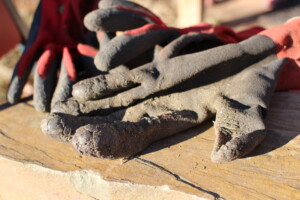

When we got all the bigger, pretty, smokable buds cut and bucked off their stems, the remaining larfy, shakey plant material was stripped from the stems. This material goes to a processor to extract the oils for CBD tinctures, gummies, isolates, and distillate products.
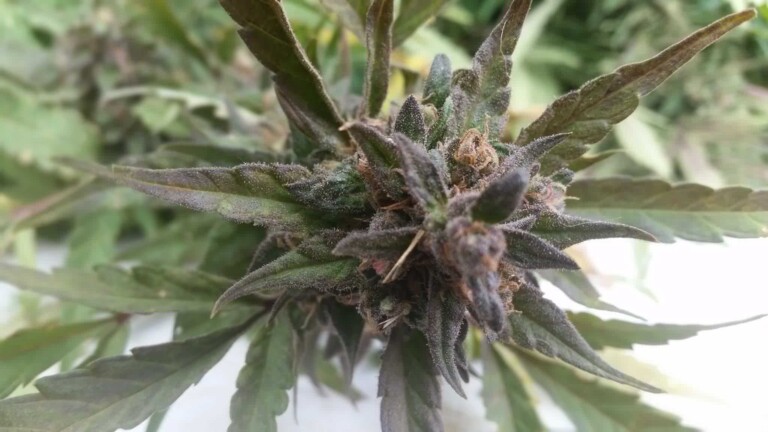
Compliance
Then a sad day came. After getting some testing done by the state of Oklahoma, we were notified that one variety, Cherrywine tested hot. It was 5%, thats way over the legal limit of THC. In this case, a hemp farmer is required to cut and burn all the plants and no part of them can be used for CBD products. So we had a hemp-burning party. Because this was just a test variety, it was no big loss; only about 100 plants. Safety, proper testing, and compliance are important to us here at Home Farm Hemp.
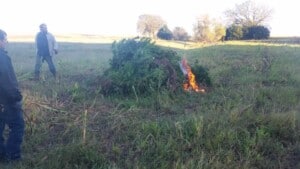
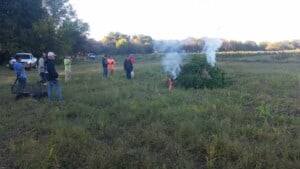
Drying, Curing and Storage
While most of the crew was working in the field, 2-3 people drove the full boxes to the dry facility and spread the buds out on hanging screens they’d erected. The ideal temperature and humidity for said drying is around 60 degrees and 60% humidity so that was being monitored and adjusted.

At the dry facility, the smokable buds went through the trimmer machine, the Twister T4. Now, the buds look like dispensary-display-quality green buds! The next step is sending off the buds to buyers, and the shaky, stripped material to the oil processors.
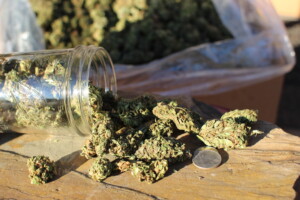
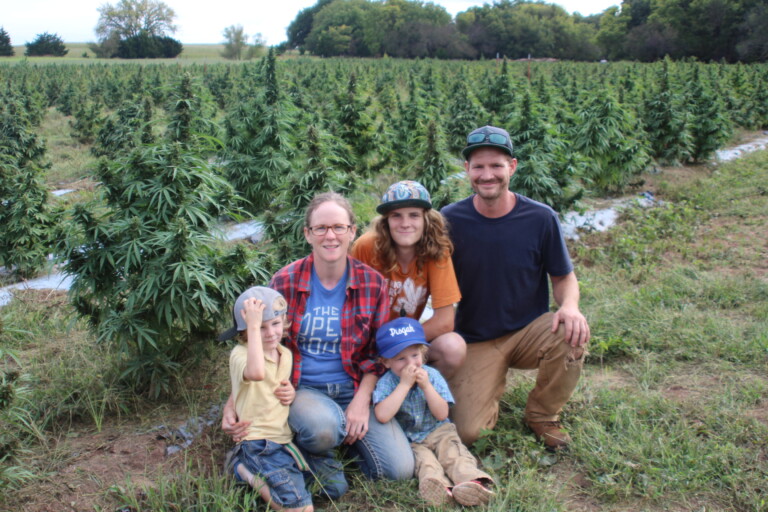
Where to Get Yours
You can purchase our Oklahoma, organic, sun-grown hemp in bulk at Cedar Canyon Goods: micpot22@gmail.com or you can grab some of our gummies, tinctures, or pre-rolls at our store; Home Farm Hemp (Coming soon!)
Resources
Companies we use and trust (we have not been paid for these plugs)
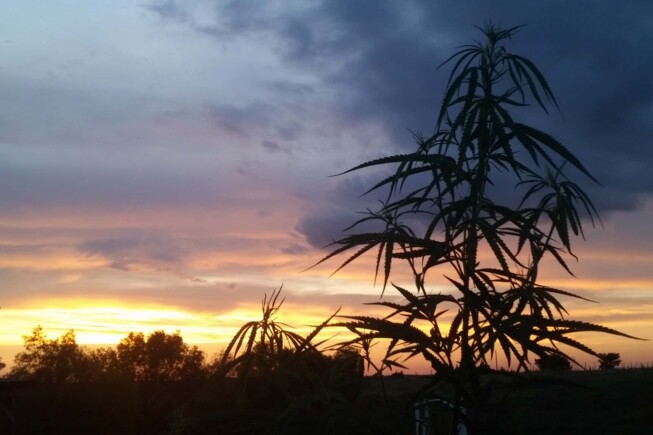
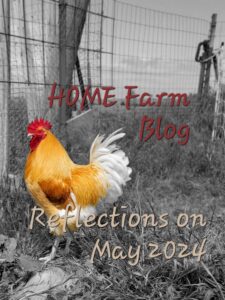






2 thoughts on “Home Farm’s Hemp Crop 2020”
Well-done & very informative posts. Looking forward to edibles….
Thank you Kathy! You are just the person we were thinking of! I’m going to send you a message about vegan gummies.